
Your garden can be a magical place with beautiful tree borders. It can have lots of colors, food, shade, and privacy. This makes your garden a happy and fun place to be in.
Tree borders can make your garden look very nice and special. They can block the things you don’t want to see and make your garden feel safe.
You can use small fruit trees or big green trees to make your garden beautiful and exciting.
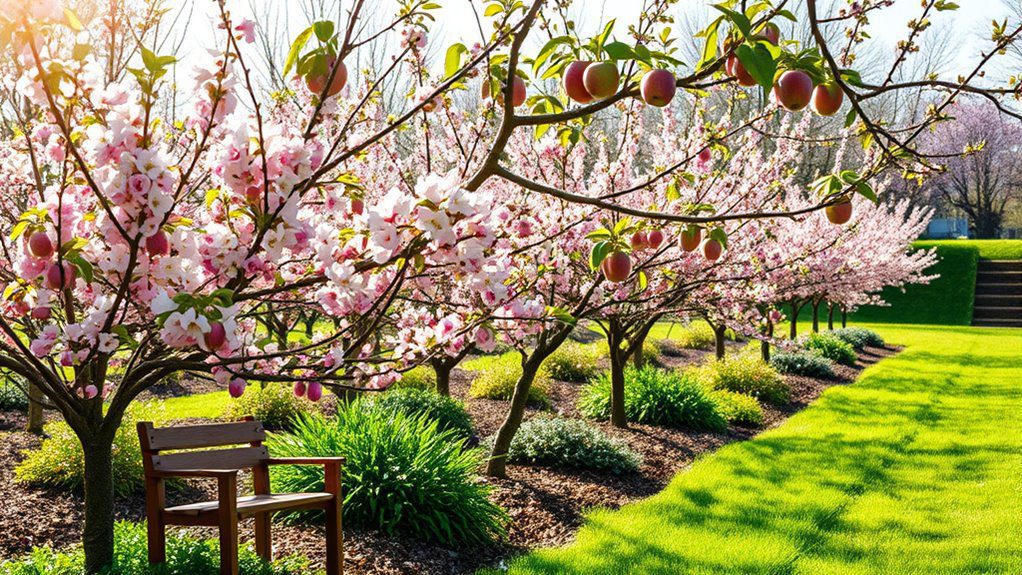
Fruiting trees can transform your garden border into a luscious and productive space. Consider planting dwarf varieties of apple, cherry, or peach trees that not only provide seasonal fruit but also enhance the aesthetic appeal with stunning blossoms. These trees attract pollinators, creating a vibrant ecosystem while offering delicious harvests. With careful planning regarding spacing and sunlight, a fruiting tree border can be both functional and visually striking, bringing joy and flavor to your outdoor area.
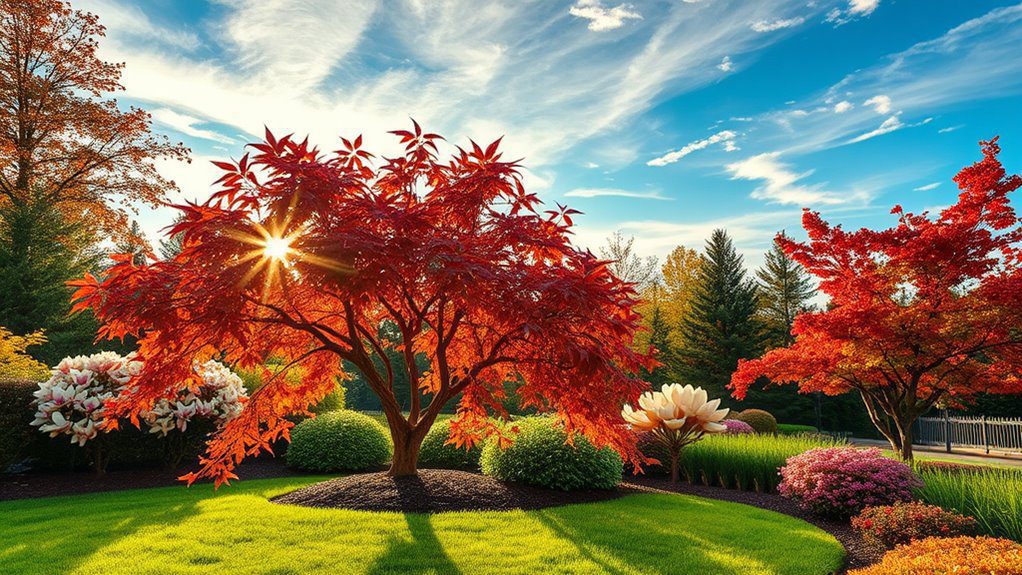
Ornamental trees are a fantastic way to introduce seasonal color to your landscape. Varieties like the Japanese maple showcase stunning foliage in shades of red, orange, and gold during the fall, while flowering dogwoods burst into delicate blooms in spring. Trees such as the magnolia add a fragrant splash of color with their large blossoms, creating a dynamic visual interest. By selecting different ornamental trees, you can guarantee that your garden remains vibrant throughout the year.
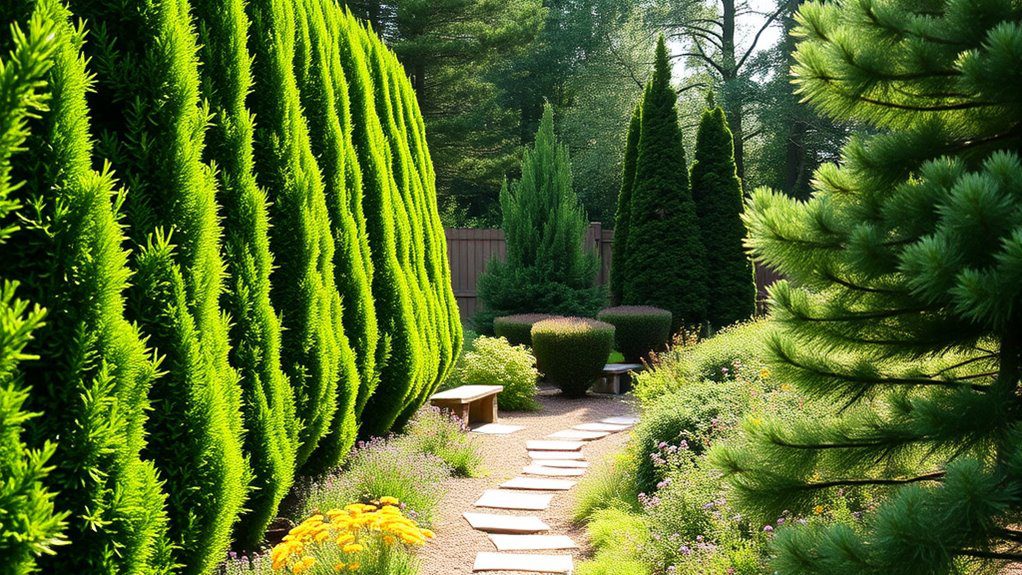
Evergreens are an excellent choice for homeowners seeking year-round privacy in their outdoor spaces. These sturdy trees maintain their foliage throughout all seasons, creating a lush, green barrier that shields your property from prying eyes. Varieties such as Arborvitae, cedars, and pines can be strategically placed to form a dense screen, while also offering aesthetic interest. With minimal maintenance and the ability to thrive in various climates, evergreens guarantee that your personal oasis remains secluded and serene all year long.
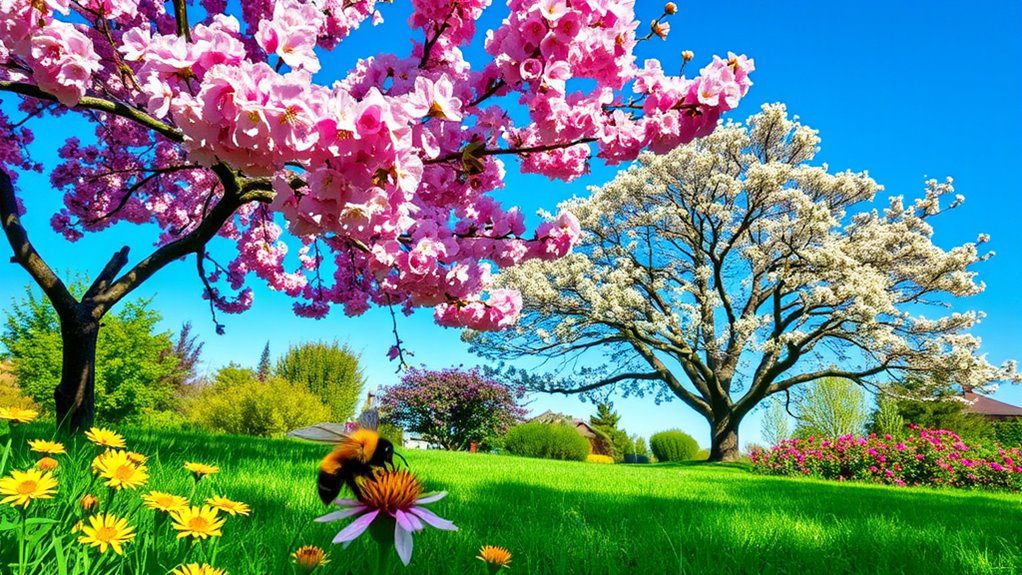
Flowering trees are an excellent addition to any garden, serving not only as stunning ornamental features but also as essential resources for pollinators. Trees such as cherry, magnolia, and crabapple provide vibrant blossoms that draw bees, butterflies, and other beneficial insects. Planting these trees in borders or clusters encourages pollinator activity, boosting the health of your garden and contributing to local biodiversity. Additionally, they offer seasonal beauty and shade, enhancing your outdoor space.
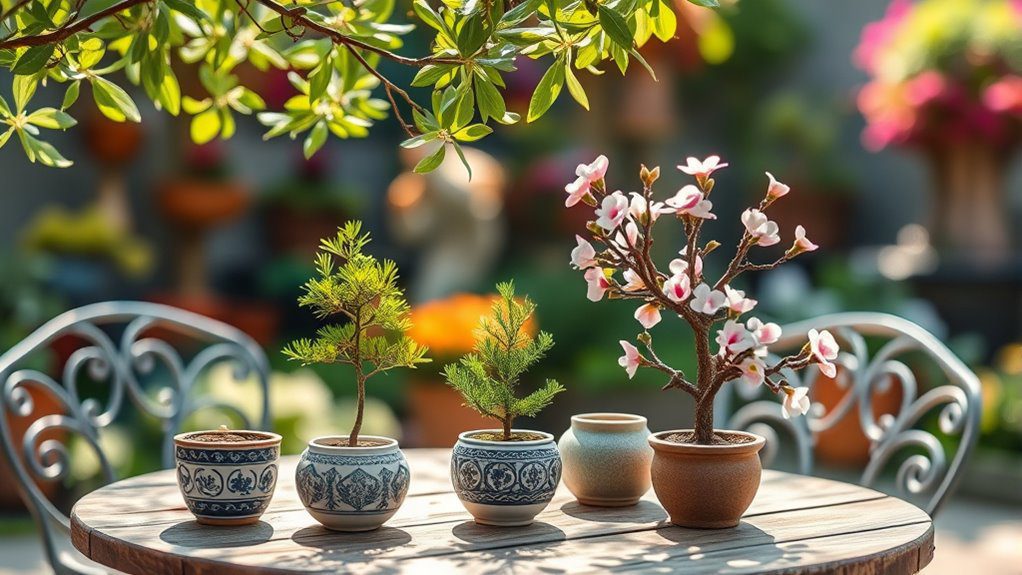
Miniature trees are perfect for small spaces, offering all the beauty of traditional trees without the overwhelming size. Varieties like bonsais, dwarf conifers, and ornamental fruit trees can create stunning focal points in patios, balconies, or even indoors. These trees require minimal maintenance and can thrive in containers, allowing for creative arrangements. Incorporating miniature trees into your landscape design not only maximizes space but also adds a touch of elegance and tranquility to any small area.
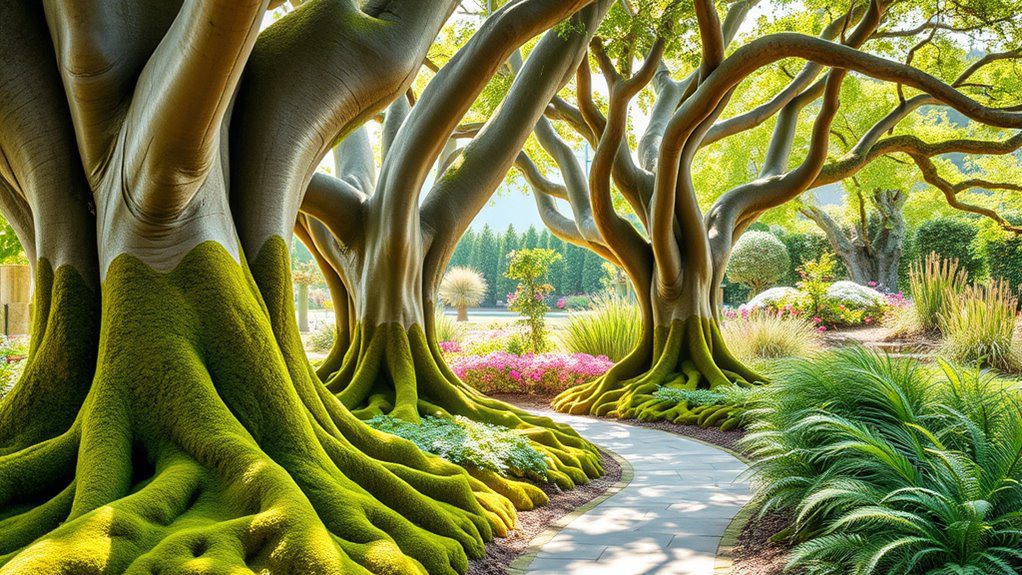
Multi-trunk trees are an excellent choice for creating unique shapes and adding visual interest to your garden borders. These trees, featuring several trunks sprouting from a single root system, can be sculptural in appearance and provide a distinctive silhouette against the landscape. Their branching structure allows for varied foliage density, offering both shade and ornamental value. Use them to define pathways or create natural barriers, enhancing the overall aesthetics of your outdoor space.
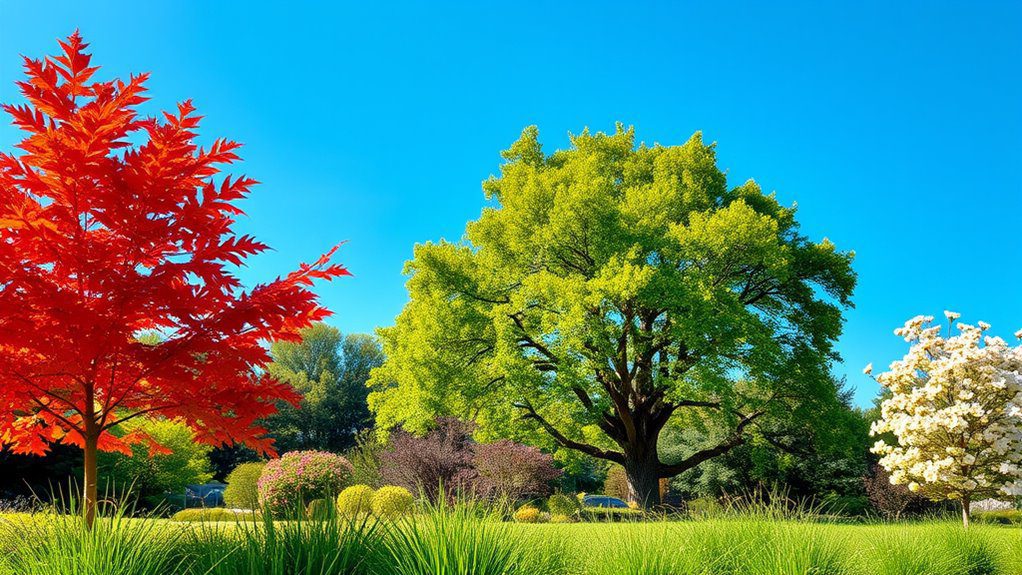
When designing eco-friendly borders, incorporating native trees is a sustainable choice that supports local ecosystems. Native trees require less water and maintenance, making them ideal for borders that thrive naturally in their environment. Species like red maples, oak, and dogwoods not only enhance the landscape with their beautiful foliage and blossoms but also provide essential habitats for wildlife. By choosing native varieties, you create a harmonious, thriving border that benefits both your property and the ecosystem.
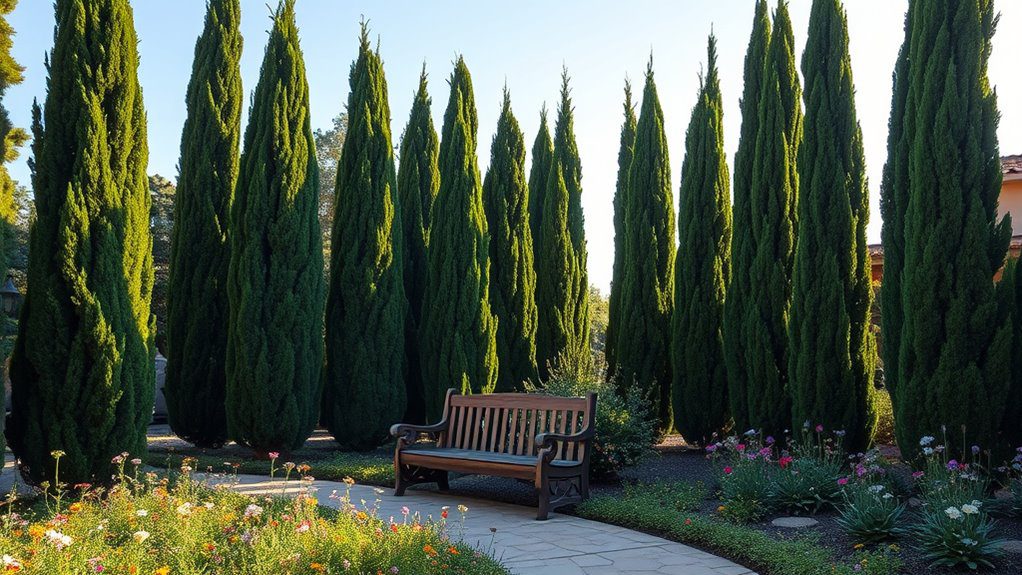
Columnar trees are an excellent choice for creating vertical impact in landscaping. Their slender form and upward growth make them ideal for narrow spaces or to add height without overwhelming a garden. These trees can serve as natural privacy screens, create striking focal points, or line pathways for a dramatic effect. Popular choices include Italian cypress and fastigiate oaks, which not only enhance aesthetic appeal but also provide shade and structure to outdoor environments.
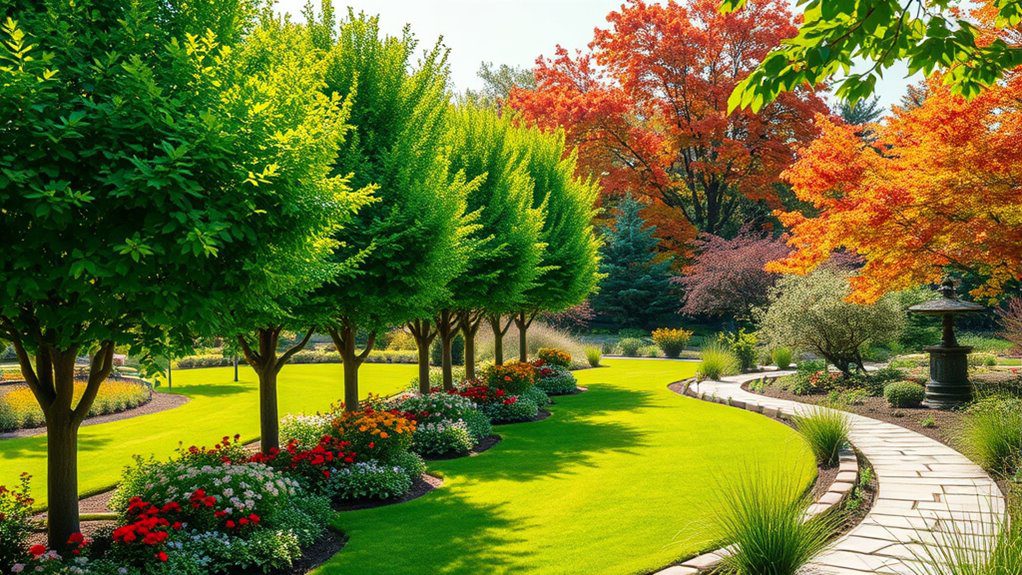
Deciduous trees are an excellent choice for creating a beautiful and shaded border in any landscape. These trees, which shed their leaves in fall, offer vibrant foliage in spring and summer, while providing breathtaking colors in autumn. Varieties such as maples, oaks, and birches not only enhance aesthetic appeal but also create canopies that help cool outdoor spaces. Their seasonal changes bring dynamic visual interest year-round, making them ideal for any garden design.
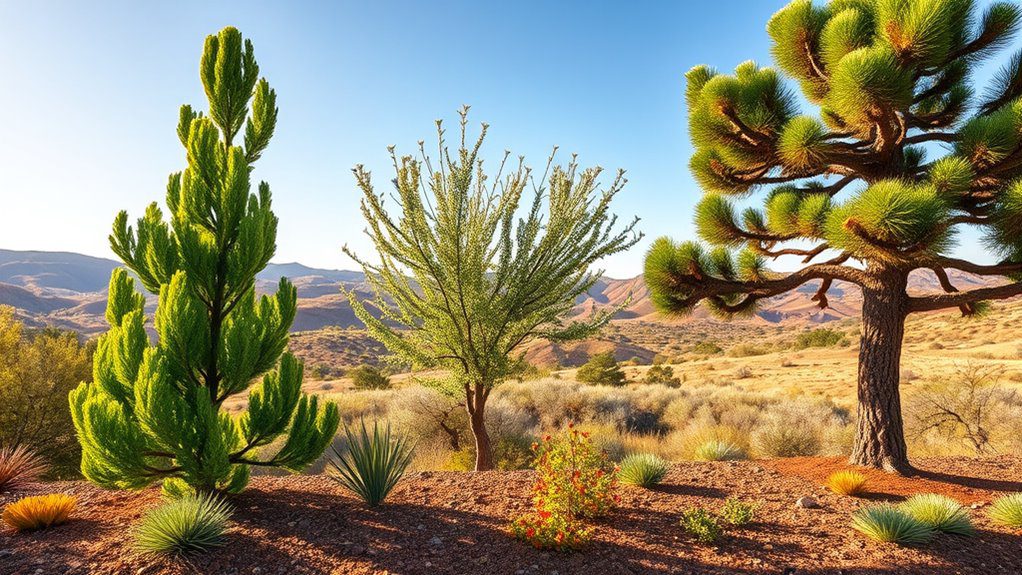
Drought-resistant trees are an excellent choice for creating low-maintenance borders. These trees are adapted to thrive in arid conditions, requiring minimal watering once established. Species such as the Red Cedar, Honey Locust, and Pinyon Pine not only provide shade and visual appeal but also contribute to water conservation. By selecting these resilient varieties, gardeners can enjoy a beautiful landscape that flourishes with little effort, making them ideal for sustainable gardening practices.
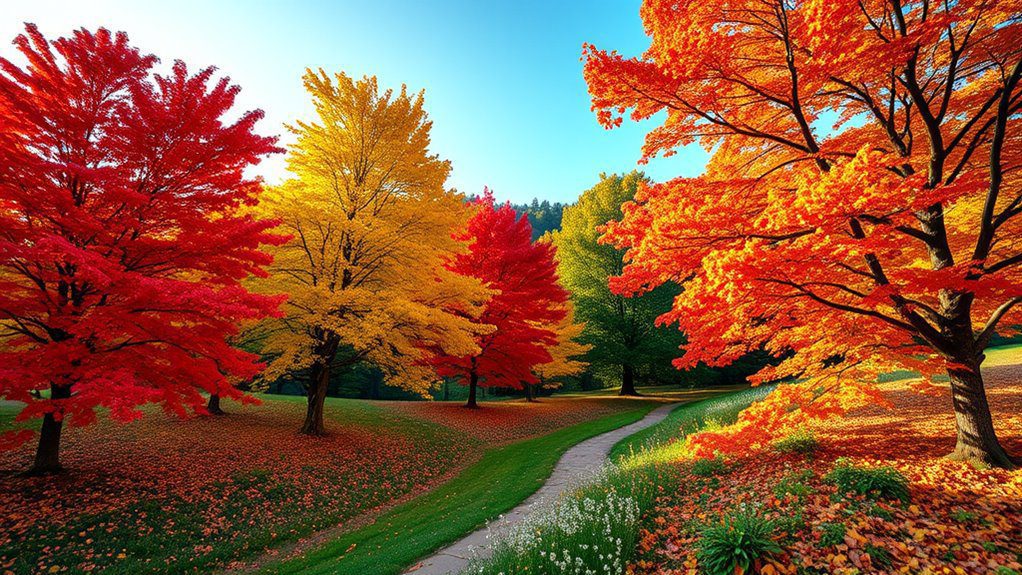
Creative tree lines with colorful foliage can transform an ordinary landscape into a vibrant oasis. By selecting a variety of trees that offer unique hues throughout the seasons, such as golden maples in autumn or lush green oaks in summer, you can create a stunning visual impact. Incorporating trees with contrasting bark colors or distinct leaf shapes adds depth to the design. Layering different tree heights and densities also enhances the overall effect, making your tree line a beautiful focal point.
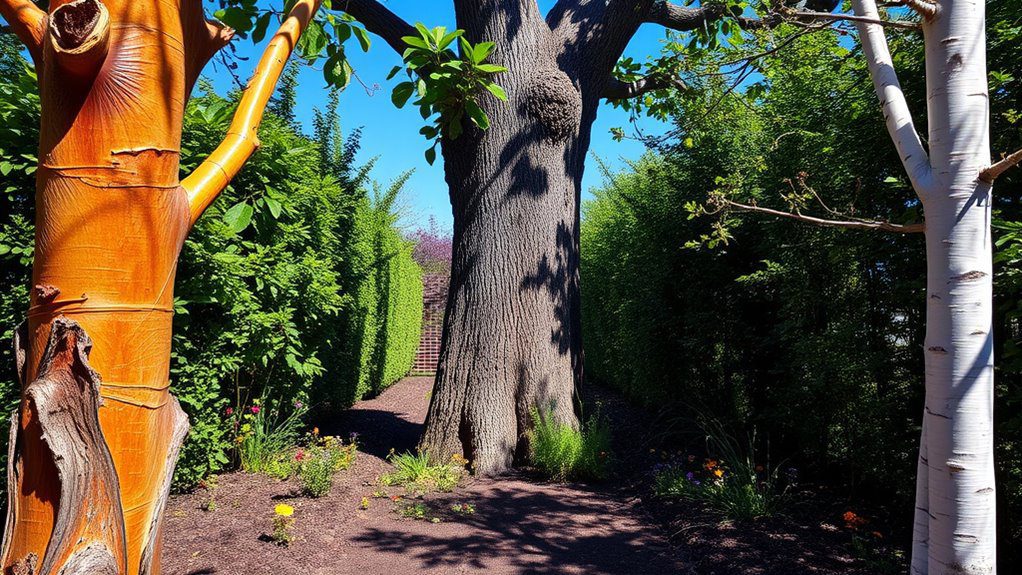
Trees with interesting bark can add striking visual texture to any landscape, making them ideal for creative borders. Varieties like the peeling and flaking bark of the paperbark maple or the rugged, furrowed texture of the southern magnolia create a stunning contrast against smoother elements in a garden. Additionally, trees like the birch, with their striking white and silver bark, can act as focal points, enhancing the overall aesthetic and depth of your outdoor space.
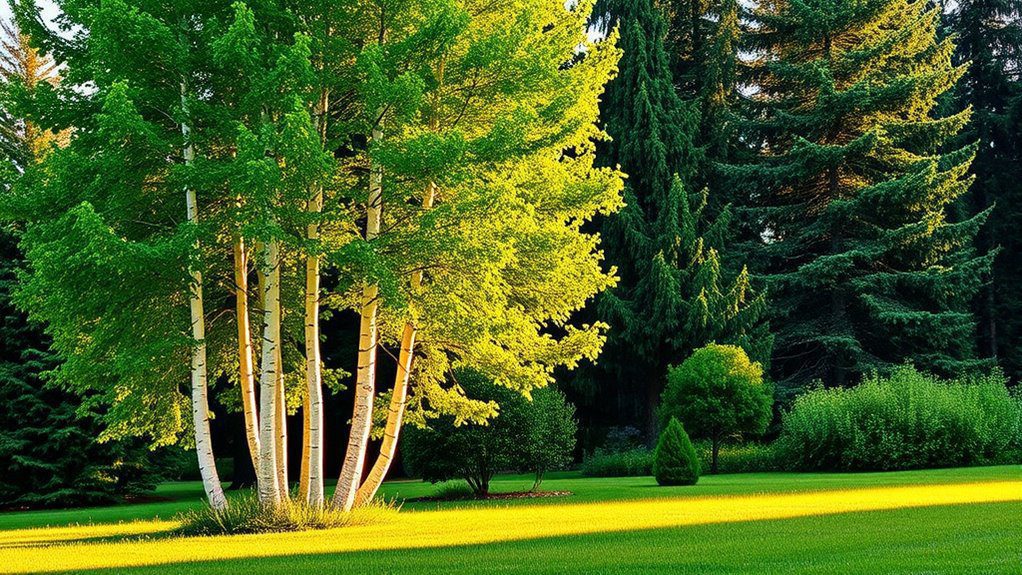
Planting trees in groups can create a stunning, lush border that enhances the overall beauty of your landscape. When selecting trees, consider varying heights, shapes, and foliage colors to add visual interest. Grouping trees not only provides a dense, green backdrop but also encourages wildlife by creating natural habitats. This approach can frame garden spaces beautifully, offer shade, and create a sense of privacy, transforming any area into a serene retreat.
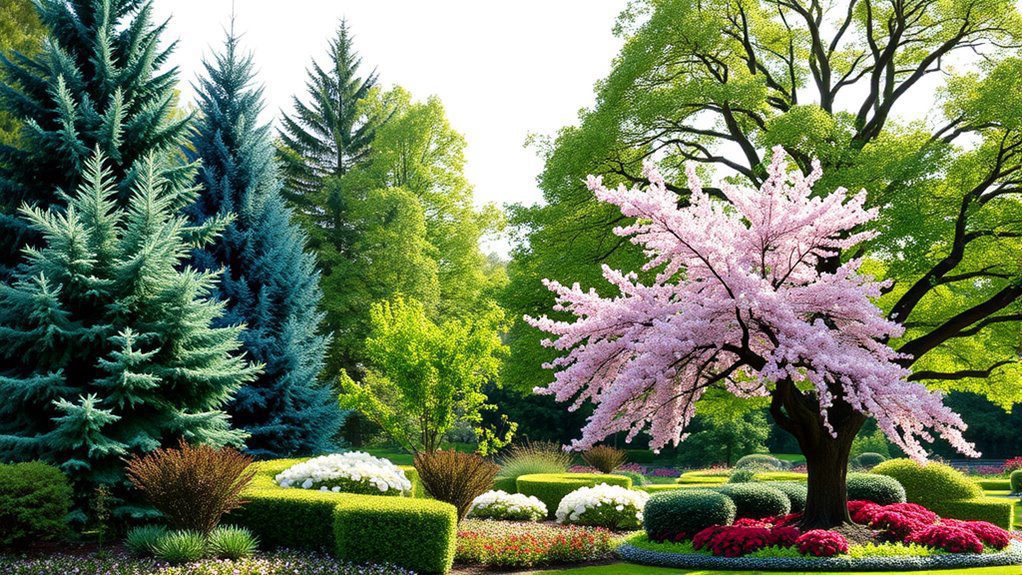
Mixing tree types for diverse borders can create a visually striking and harmonious landscape. By selecting a variety of trees that bloom in different seasons or provide unique foliage, you can achieve year-round interest. Consider pairing deciduous trees with evergreens for contrast or combining flowering species for a vibrant display. This approach not only enhances aesthetic appeal but also supports biodiversity, attracting various birds and pollinators to your garden border.
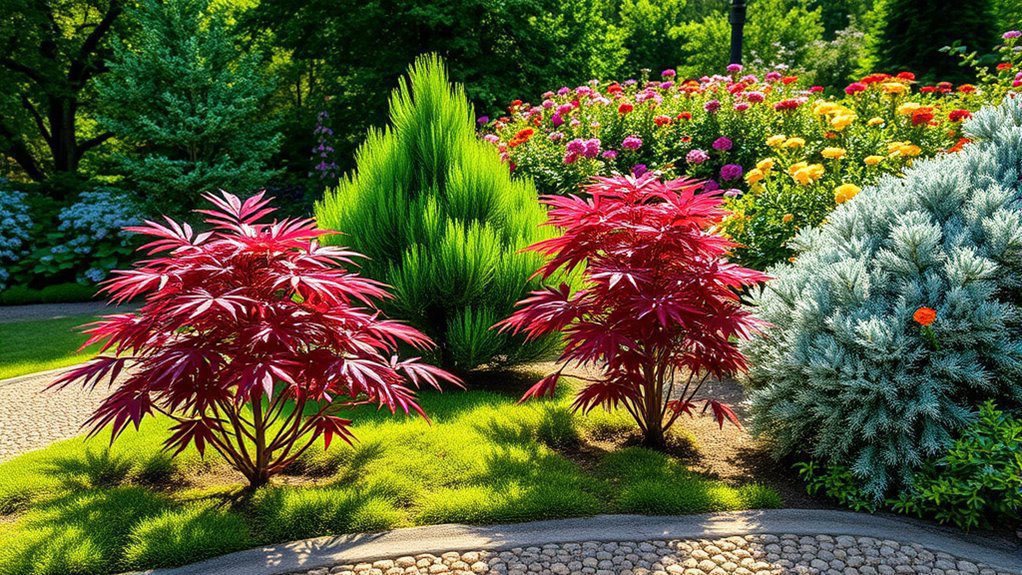
Low-growing trees are an excellent choice for creating a lush, green border while also providing ground coverage. Varieties like Japanese Maple, Dwarf Spruce, and Creeping Juniper offer beautiful foliage and unique textures, making them ideal for defining edges and enhancing landscapes. These trees not only stay low to the ground, but they also provide a sense of enclosure and intimacy in outdoor spaces. Their manageable height allows them to blend seamlessly with other garden elements, creating a harmonious look.
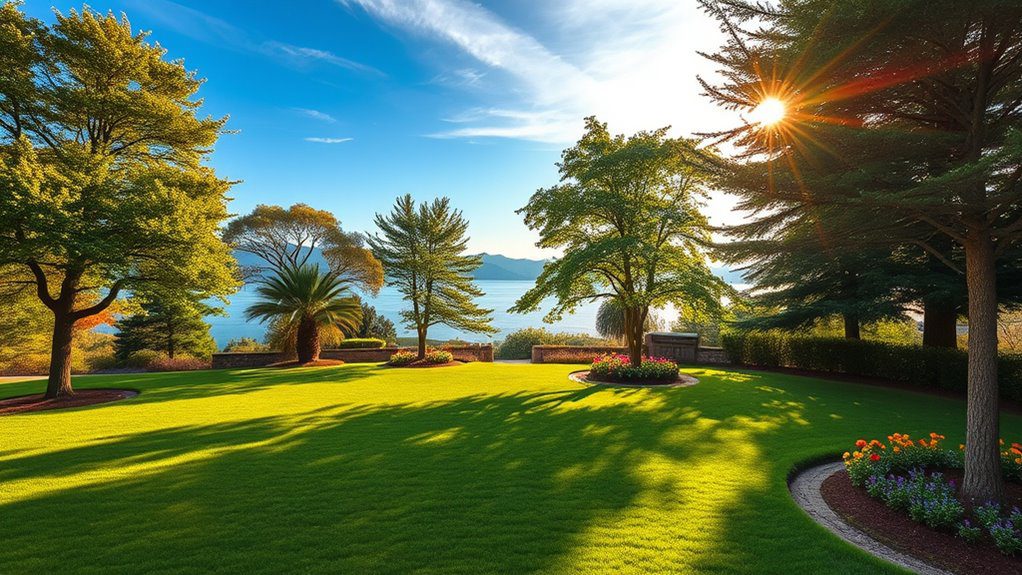
When spacing trees strategically for open views, it’s essential to contemplate both aesthetic appeal and functionality. Position trees at varying distances to avoid obstructing natural sightlines while preserving the landscape’s charm. Aim to create layers of height, allowing lower plants or structures to be visible. Use trees with a moderate canopy spread that provides shade without overwhelming the vista. This thoughtful arrangement enhances scenic beauty while ensuring a harmonious balance between privacy and openness.
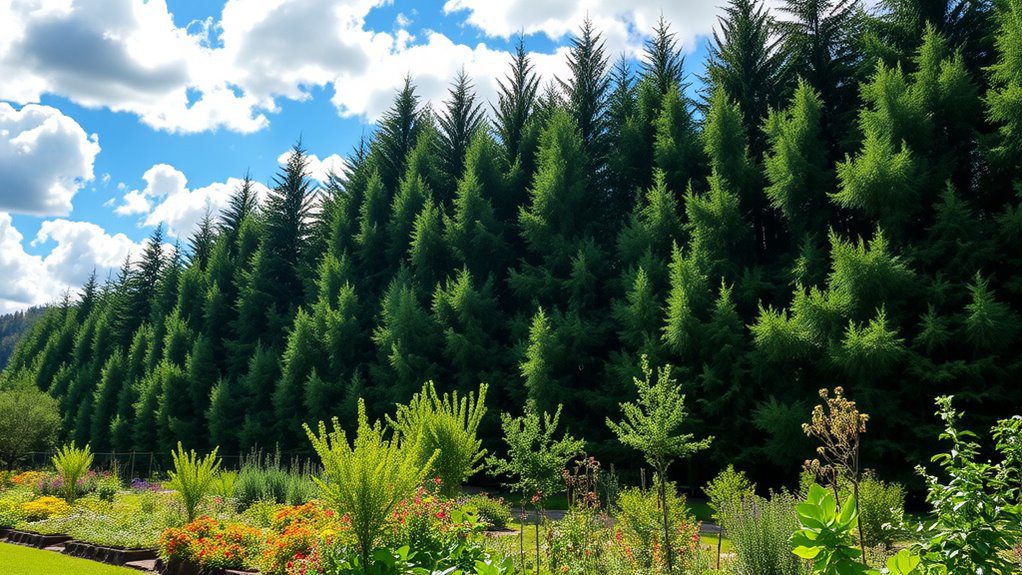
Using trees as windbreaks is an effective way to create a natural barrier against harsh winds, protecting your garden and home. Strategically planting a row of tall, dense trees can reduce wind speed, create a more stable microclimate, and enhance landscape aesthetics. Popular species for windbreaks include evergreens like pines and spruces, which provide year-round coverage. Additionally, incorporating layers of trees and shrubs can improve biodiversity and attract wildlife while providing effective shelter from the elements.
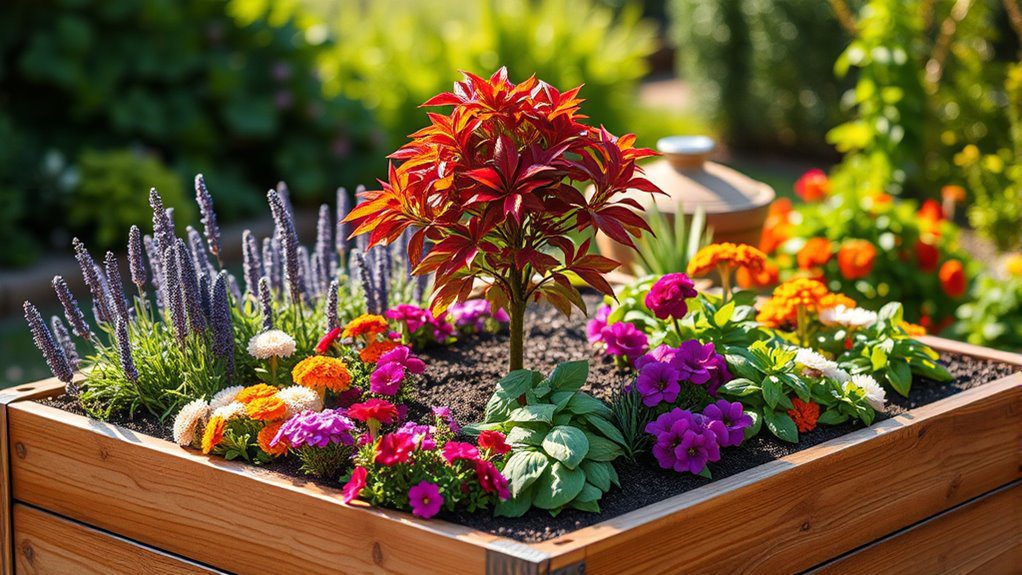
Incorporating trees into raised beds and planters can create a stunning focal point in your garden space. Choosing dwarf or miniature tree varieties allows for a beautiful vertical element without overwhelming the area. Consider pairing these trees with colorful flowering plants or herbs to enhance visual appeal and maximize biodiversity. Elevating trees in raised beds not only improves drainage but also creates a unique layered look, promoting both aesthetic beauty and practical gardening advantages.
By incorporating these 18 creative tree border ideas, you can truly elevate your garden’s appeal. Did you know that a single mature tree can absorb over 48 pounds of carbon dioxide annually? Imagine the added beauty and environmental benefits you’ll enjoy! Whether you opt for dwarf fruit trees or stunning flowering varieties, each choice enriches your outdoor space. Embrace the beauty of nature while creating a vibrant sanctuary that flourishes with life and color throughout the seasons.

Don't let aphids, slugs, and caterpillars ruin another plant. Take back control with simple, natural methods that actually work.